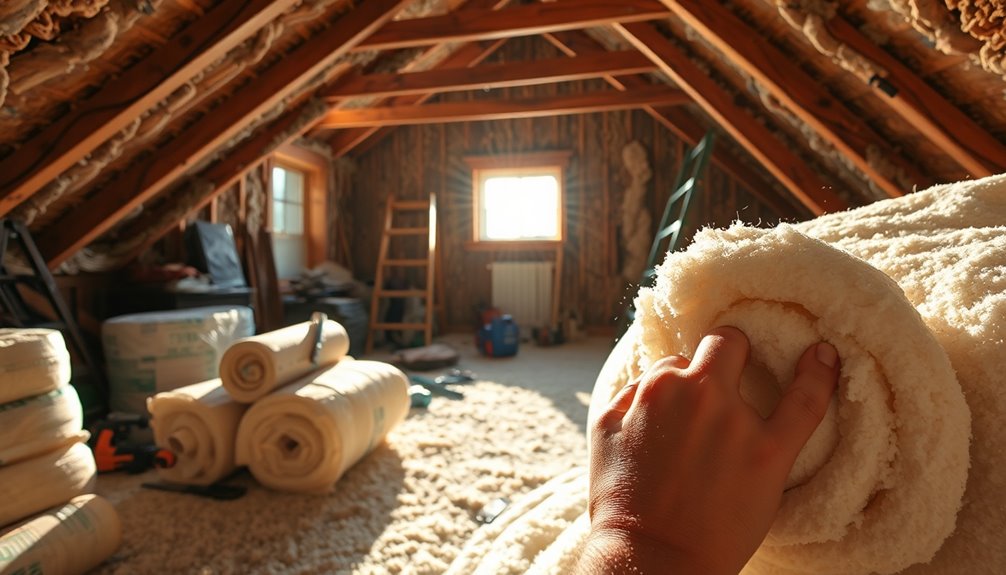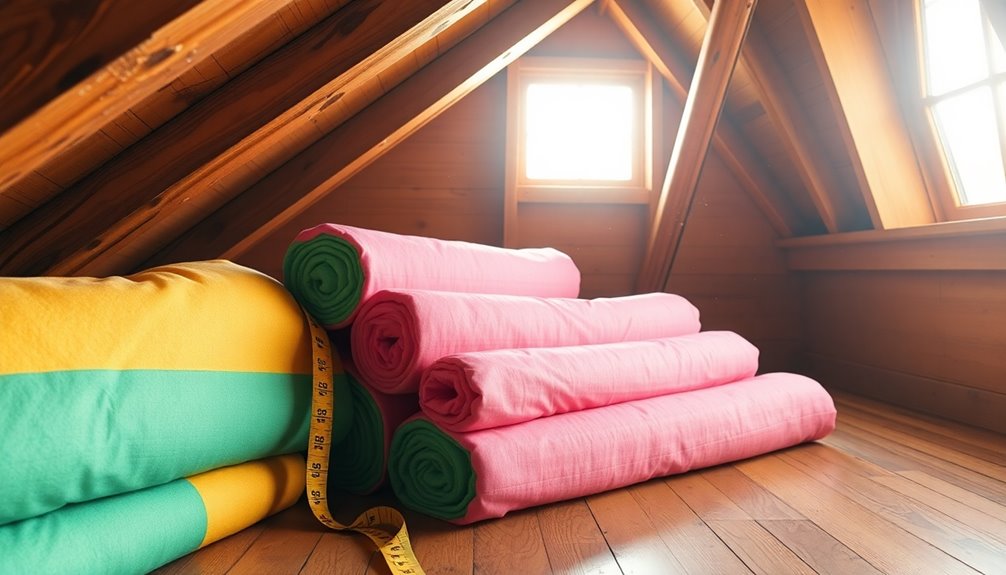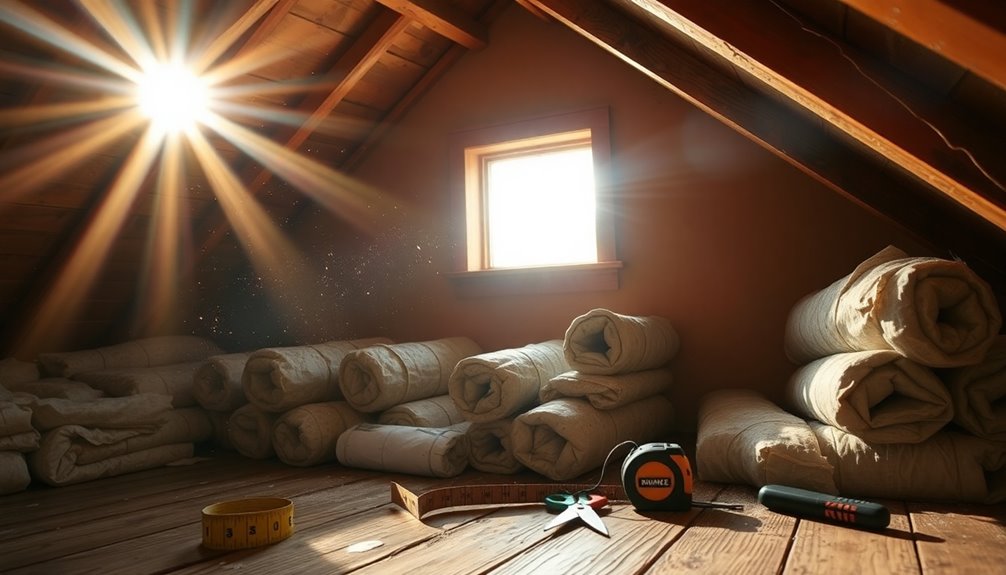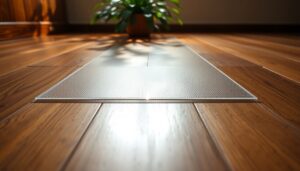Attic insulation on a budget is totally achievable with MES solutions. Start by choosing cost-effective materials like fiberglass or cellulose, which range from $0.30 to $4.20 per square foot. Prioritize air sealing by using weather stripping and caulking, as these inexpensive fixes greatly boost efficiency. If you're up for it, DIY installation can save you even more. Just remember to wear protective gear and inspect for gaps. With proper planning and realistic budgeting, you can dramatically cut down on energy bills. Keep exploring to uncover more valuable tips and tricks for maximizing your insulation efforts.
Understanding Insulation Materials
When it comes to your attic's insulation, understanding the different materials available can make a considerable difference in both comfort and energy efficiency.
You've got several insulation materials to choose from, each with unique benefits. Cellulose insulation, made from recycled materials, offers an R-value of R-3.1 to R-3.8 per inch, providing excellent sound-dampening qualities and eco-friendly benefits. Additionally, this type of insulation can significantly contribute to effective cash flow management when considering long-term energy savings. Budgeting apps can also assist in tracking these savings over time.
Fiberglass insulation, available in batts or blown-in forms, presents an R-value between R-2.2 to R-4.3 per inch. It's moisture, mold, and fire-resistant, making it a budget-friendly choice for many homeowners.
If you're looking for high-quality energy efficiency, consider spray foam insulation, which boasts the highest R-value of R-6 to R-7 per inch. This option excels in air sealing but usually requires professional installation due to its complexity.
Lastly, rigid foam insulation provides an impressive R-value of R-5 to R-7 per inch, suitable for various applications, including basements. However, remember that it can be vulnerable to UV damage if not properly protected. Additionally, using advanced receipt scanning technology can help homeowners keep track of their insulation expenses, ensuring better financial management.
Cost-Effective Insulation Options
Often, homeowners seek cost-effective insulation options to enhance their attic's energy efficiency without breaking the bank. One of the most affordable choices is fiberglass insulation, costing around $0.30 to $1.50 per square foot. With an R-value of 2.2 to 4.3 per inch, it's a solid option for budget-conscious individuals. Many people also benefit from using budget apps to help manage their expenses while planning home improvements. Effective management of spending can significantly ease the financial burden of home upgrades.
If you're looking for something eco-friendly, consider cellulose insulation. It ranges from $0.60 to $4.20 per square foot and boasts an R-value of 3.1 to 3.8 per inch.
Loose-fill insulation, whether fiberglass or cellulose, is another practical solution for your attic, typically starting at $3.95 per square foot. For a lightweight alternative, expanded polystyrene (EPS) foam is available for about $0.60 to $2.00 per square foot, although it can absorb moisture.
Don't forget about air sealing! By investing in weather stripping or caulking, you can greatly improve your attic's insulation effectiveness without spending a fortune. Additionally, opting for sustainable packaging solutions when purchasing insulation materials can further enhance your home's eco-friendliness.
These cost-effective insulation options not only lower your energy bills but also contribute to overall energy savings in your home.
DIY Installation Tips

Installing attic insulation can be a rewarding DIY project that enhances your home's energy efficiency. To get started, make sure you wear protective gear like gloves, masks, and goggles to avoid irritation from fiberglass particles.
As you work, utilize boards to create walkways on the ceiling joists; this helps distribute your weight and prevents ceiling collapse.
When laying down fiberglass insulation, stack the blankets at right angles. This technique improves coverage and fills gaps effectively, ensuring your attic is properly insulated. Additionally, consider using investment tracking apps that can assist in budgeting for home improvement projects. Setting realistic goals for your insulation budget can also help you stay on track.
Don't forget about sealing! Use expanding foam to fill small gaps and holes around pipes and electrical wires to prevent unwanted air leaks, which can greatly boost your energy consumption.
Once your insulation is in place, regularly inspect for moisture signs. Catching moisture early can prevent mold growth and maintain the insulation's effectiveness. Additionally, consider creating a budget to manage the costs associated with your insulation project, as budgeting for financial goals can lead to better long-term savings.
If you notice any issues, consider installing baffles to maintain airflow around soffit vents.
Following these DIY installation tips won't only enhance your attic's insulation but also contribute to a more comfortable and energy-efficient home.
Air Sealing Techniques
Air sealing is an essential step in enhancing your attic's energy efficiency and comfort. By sealing gaps and cracks, you can greatly reduce heat loss and prevent drafts, which often lead to higher heating and cooling costs. Proper air sealing techniques don't have to break your budget; in fact, using foam cans to fill those pesky gaps is a low-cost solution that can yield quick results. Additionally, utilizing tools like expense tracking tools can help you manage the costs associated with your home improvement projects effectively. Expense tracking apps can provide detailed insights and reporting that improve financial tracking for such projects.
Start by inspecting your attic for any noticeable air leaks. Pay special attention to areas where different building materials meet, like around vents and chimneys. Regular inspections can help you catch new drafts early and maintain ideal insulation performance.
Utilizing resources like Energy Star and Building Science can guide you in implementing effective air sealing techniques. These practices not only enhance your home's comfort but also lead to decreased energy bills, providing a solid return on investment. Additionally, adopting sustainable shopping practices can ensure that the materials you use for air sealing are environmentally friendly and cost-effective.
Budgeting for Insulation

When it comes to budgeting for attic insulation, you'll want to evaluate various factors that can impact your overall costs. The cost of insulation materials can range from $0.30 to $7.00 per square foot, with fiberglass being the most budget-friendly option at about $0.30 to $1.50 per square foot.
If you aim for an R-value of 40 or above, you might need about 15 inches of blown-in cellulose, which can cost between $0.60 and $4.20 per square foot. Additionally, it's beneficial to explore automated savings tools that can help you set aside funds specifically for your insulation project. Utilizing cashback programs can also provide additional savings on your insulation materials.
To make your installation more affordable, research state subsidies and rebates for energy-efficient insulation upgrades. These can greatly reduce professional installation costs.
You can also consider DIY solutions, like sealing air leaks with weather stripping or caulking, which are low-cost methods to boost insulation effectiveness. If you're not ready to tackle the entire project at once, phased improvements allow you to spread costs over time. This way, you can gradually enhance your attic's energy efficiency while staying within your budget. Additionally, understanding financial goals can help you allocate your resources effectively for your insulation project.
Conclusion
In the quest for a cozy home, tackling attic insulation on a budget doesn't have to feel like traversing a labyrinth. By exploring cost-effective materials and DIY techniques, you can transform your space without breaking the bank. Remember, even the smallest changes can lead to significant savings—just like the tortoise in the race, slow and steady wins the day. So roll up your sleeves, seal those gaps, and enjoy a warmer, more energy-efficient home.



